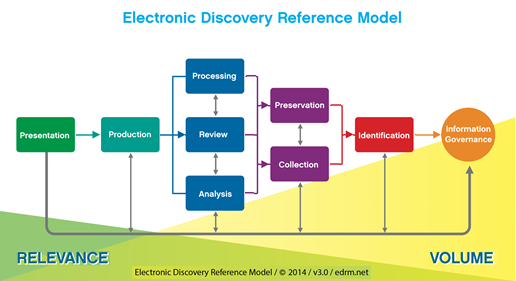Gartner Report Estimates eDiscovery Software Market was $1.8 Billion in 2014: eDiscovery Trends

The eDiscovery marketplace grew in 2014 with total software revenue reaching $1.8 billion worldwide, according to Gartner’s annual Magic Quadrant for E-Discovery Software report, released last week.
In the Market Overview section of the report, Gartner estimated that the enterprise e-discovery software marketplace was $1.8 billion in total software revenue worldwide in 2014, an increase of 10.6% from 2013, with a five-year compound annual growth rate (CAGR) of around 12%.
The report also identified several key trends impacting eDiscovery, including:
- Increased migration to Office 365 by organizations;
- Increased dialogue on how to preserve social and Web data, as well as data related to the Internet of Things (IoT);
- Focus on agile and less expensive approaches to eDiscovery as opposed to traditional project-based approaches;
- Trends continuing towards simplified pricing structures;
- Increased deployment of eDiscovery software via SaaS models; and
- Continued shake-up of the market, with Microsoft’s acquisition of Equivio, continued expansion of existing vendors and penetration into the market by startups.
As usual, the Gartner report also surveyed the landscape of eDiscovery vendors that met inclusion criteria, including at least $20 million in revenue, 50 or more clients, and ownership of the intellectual property and copyright to their software. This year’s report includes 20 vendors that meet these conditions (down from 22 vendors last year), and uses Gartner’s “magic quadrant” to rank them as leaders, visionaries, challengers, or niche players based on an analysis of the strengths and weaknesses. To be included in this report, a vendor also had to sell enterprise software licenses, a software appliance or SaaS conforming to Gartner’s definition of SaaS. Two new vendors were added to the quadrant this year while four were dropped (Gartner also identified four additional “vendors to watch”).
The report is available for purchase here on Gartner’s site, though, it can be obtained for free from several of the vendors named in the report.
So, what do you think? Are you surprised by any of the trends affecting the eDiscovery market? Please share any comments you might have or if you’d like to know more about a particular topic.
Disclaimer: The views represented herein are exclusively the views of the author, and do not necessarily represent the views held by CloudNine. eDiscovery Daily is made available by CloudNine solely for educational purposes to provide general information about general eDiscovery principles and not to provide specific legal advice applicable to any particular circumstance. eDiscovery Daily should not be used as a substitute for competent legal advice from a lawyer you have retained and who has agreed to represent you.





